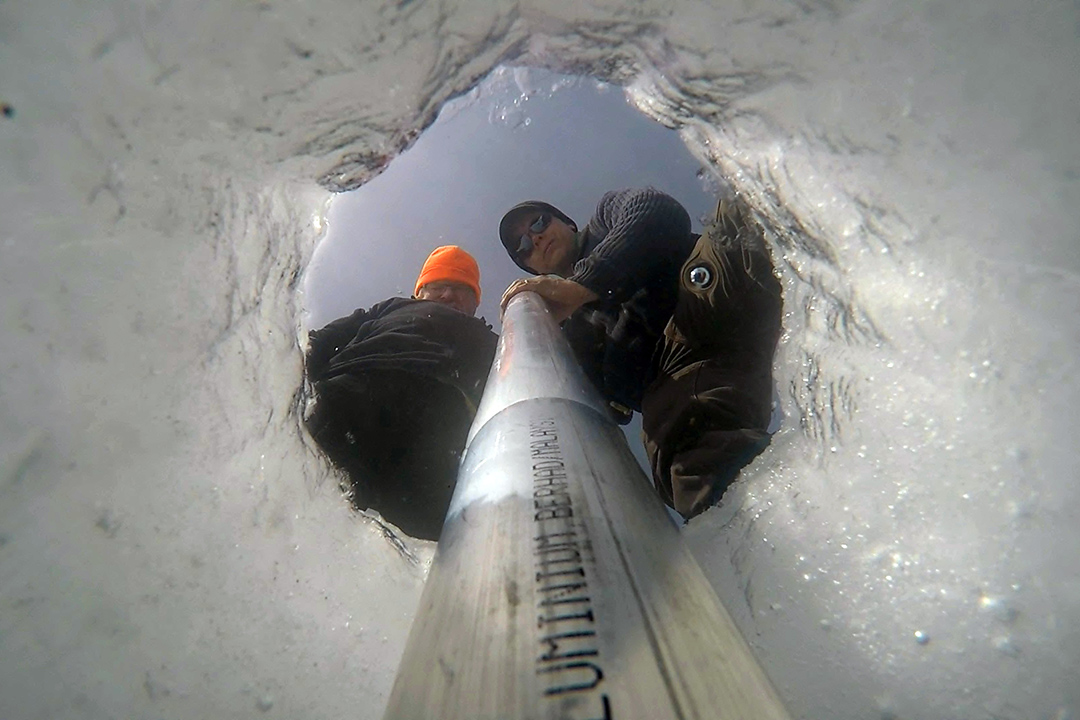
Global water crisis requires collaboration and innovation
The global water crisis requires a portfolio approach and extensive collaborations, USask researcher says.
By Lorne DoigThis story for the Globe and Mail (Prairie Edition) was published on June 25, 2019.
Water is essential for life – and scarcity of freshwater resources, exacerbated by climate change, can trigger serious consequences, including economic hardship, conflict and displacement. Projections of the Intergovernmental Panel on Climate Change estimate that five billion of the world’s 7.6 billion inhabitants live in areas where water security is at risk.
The global water crisis requires a “portfolio approach and extensive collaborations,” proposes Jay Famiglietti, Canada 150 Research Chair in Hydrology and Remote Sensing and executive director of the Global Institute for Water Security (GIWS) at the University of Saskatchewan (USask). “We are not going to make much progress if we try to tackle this alone. It has to be a team effort.”
Dr. Famiglietti is one of the authors of a recent study, which used data from satellites, including NASA’s Gravity Recovery and Climate Experiment (GRACE) satellites, and other sources, and determined that freshwater availability changed dramatically between 2002 to 2016. He says, “Mid-latitude areas of the world are getting drier, while the bordering tropical and high latitude areas are getting wetter.”
The study identified a number of global hotspots, the majority of which are losing water rapidly because of excessive groundwater pumping or the melting of ice sheets or glaciers. While challenges of such magnitude can lead to “feeling overwhelmed by the scope of the global water crisis,” he believes two things can be done. “We can look at the hotspots around the world and work to bring together various stakeholders to address them. We can also think about what new institutions we might form to drive better global co-ordination.”
Dr. Famiglietti, who moved from Southern California to join the University of Saskatchewan in 2018, sees “coming to GIWS as an opportunity to move the needle on global water security,” he says. “Canada has done an amazing job in providing the resources for tackling problems on a global scale, and its investment in water research is unprecedented in the Western hemisphere.”
To leverage water research for positive change, Dr. Famiglietti suggests “creating regional and global networks that involve universities and government, the private sector and civil society.” Existing partnerships, for example the US ask-led Global Water Futures research program, have the potential to be expanded, he adds. “Our networks have focused on cold regions and on Canada to date, but globally there is a lot more going on that is connected to climate change and changing extremes – for example, how they affect displaced populations, governance and water quality. We must engage in these issues globally.”
The urge to communicate and partner with stakeholders was inspired by the work on global maps, says Dr. Famiglietti. “As scientists, we often have the privilege of seeing the data for the first time, which can be very exciting but comes with the responsibility to share our findings,” he explains. “In the case of water, the picture that emerges is so compelling that it requires us to get involved with decision-makers, elected officials and the general public. It’s a tough message, but it has to be delivered.”
In Canada, this means dispelling the myth that the country is water-secure, he says. “There is this sense that we have an abundant and reliable potable water supply, but that’s not the case. Much of our groundwater is contaminated or polluted. Incidents of flooding and drought are on the rise, and we have increasing forest fire risks – all of which affect our water.”
Dr. Famiglietti, who pioneered the use of satellites to quantify groundwater depletion from the globe’s major aquifers, aims to leverage his expertise in data analysis to forge a closer partnership between GIWS and USask’s Global Institute for Food Security.
“We are looking to conduct multi-scale measurements across Canadian farms, combining data from observations on the ground and from drones and satellites. We can mine these rich data sets to understand how food production is responding to climate change and understand the barriers to more efficient water use.”
Innovation in agriculture is key for addressing water challenges, he says. “Since food production is water-intensive and uses about 80 per cent of the water we withdraw, anything we can do to save water in agriculture will have a big impact.”
Examples are breeding types of crops that are more drought resistant, use less water or store more carbon – or a combination of all three, says Dr. Famiglietti. Other measures include developing more precise irrigation, which delivers the optimal amount of water and nutrients to the plant, and changing the price of water.
At a time when the world’s freshwater resources are under an unprecedented level of stress due to climate change and unsustainable water use, Dr. Famiglietti believes researchers can be part of the answer by looking to develop and implement a range of policy and technology innovations.
And by becoming more deeply involved with stakeholders, for example, water districts and government agencies, universities can help to co-develop action plans, he suggests. “Today, it is critical to look at the global scale, but to inform pressing issues at provincial and local scales, where important water management decisions are being made.”
Article re-posted on .
View original article.
